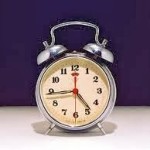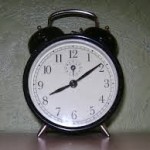 |
| S. Dali |
As writers, we wear a lot of hats. One of the most important is that of time manager. And we manage three major types of time.
Writing Tip for Today: According to writing teacher and novelist Jack Bickham, there are three kinds of time in novels: Story time, Reader time and Writing time.
- Story Time. Story time refers to the time span that passes in the story–scene by scene, this could mean a day or a hundred years. Your novel’s timeline refers to the total time elapsing in your story. If you story board your novel, you can place scenes along this timeline to gauge the breadth of the story. Be aware, though, that chronicling every moment of this timeline is liable to be a mistake. If nothing happens to move the character closer to the goal, then leave it out. Just because your character has a weekend doesn’t mean you should write about it.
- Reader Time. Reader time refers to the actual time it takes a reader to read through a particular scene or passage. Again, you are the manager. For scenes of lesser importance or scenes where things happen rapidly (such as a car chase), you may want to speed up the scene: fewer descriptive words or modifiers, shorter sentences, more narration and fewer internal thoughts, less acting out. For moments of great importance or when you need to slow down the action, longer sentences, more interior thoughts, less narration. The actual time it takes for a reader to read this may be only a minute or two.
- Writing Time. Of course, writing may take quite a while–especially if you do a lot of revising. My advice is to whip out scenes as fast as you can, let them “cool off” and then go back and take these things into consideration: What is the feeling of time I need my readers to experience? Am I jumping ahead too fast or dragging the reader through a swamp of ineffectual details or scenes? Take as many hours, days or whatever unit of time you need to get your scenes adjusted. The time you spend now can make or break the reader and story time later.





